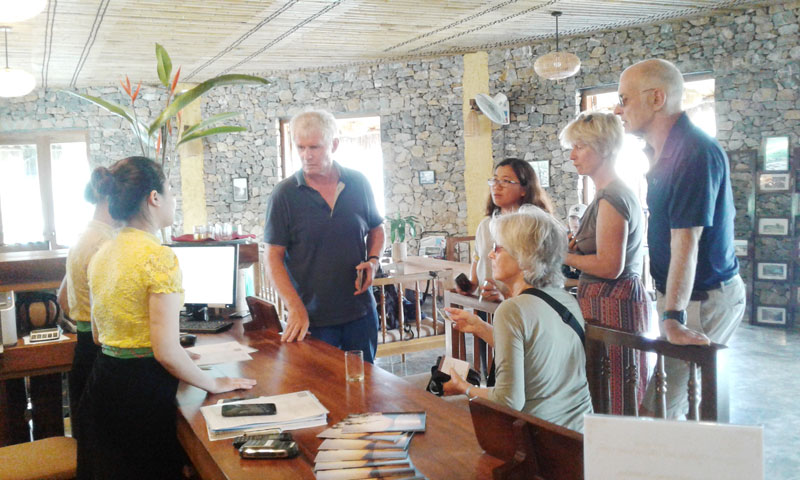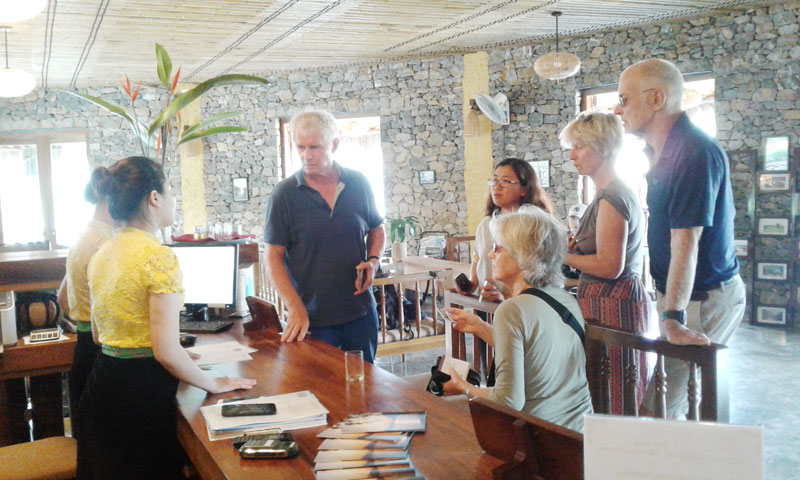


 Mai Chau Hideaway Resort in Tan Mai Commune (Mai Chau) is an attractive
destination for tourists.
Mai Chau Hideaway Resort in Tan Mai Commune (Mai Chau) is an attractive
destination for tourists.
In order to create favorable conditions for tourists, Mai Chau district has invested in expanding roads connecting the tourist spots. Now tourists can visit Mai Chau by electric cars. Many households have boldly invested capital in food service, relaxation, photography, shopping and so on in tourist areas.
Mr. Alex, a British citizen who has just paid a visit around by electric car, says "This is the first time I have come to Mai Chau. My first feeling is that people here are very friendly, the air is fresh and it is very close to the nature. I really like the traditional old stilt houses of the local people, the rustic dishes. Before I came here, I was going to stay for 2 days, but the visit was very interesting and there were many tourist attractions, so I stayed for one more day.”
Mr. Ha Hien Nhien, the businessman of the homestay in Buoc village, Xam Khoe commune says that the number of tourists visiting Khoe village is increasing day by day. They like to experience long walks, bicycle rides, especially in the forest. We have guests almost everyday.
Last year, one of the highlights of Mai Chau tourism is that Mai Chau Hideaway resort in Tan Mai commune was inaugurated and put into operation. This is an eco-resort area on Hoa Binh lake having 31 fully-equipped rooms with modern equipment, in which there are 6 bungalows facing Hoa Binh lake.
In recent years, the district has paid attention to the propaganda and tourism promotion through the investment promotion. There are 13 communes and village doing community tourism business and 146 tourist accommodation establishments in the whole district. In 2018, the district welcomed over 300 thousand turns of visitors, of which there were over 132 thousand turns of international visitors and nearly 200,000 turns of domestic tourists. The total tourism revenue of this year reached over 100 billion VND. Particularly in the recent Lunar New Year, Mai Chau district welcomed over 9,000 turns of visitors, in which there were over 1,000 turns of international visitors and nearly 8,000 turns of domestic tourists. It was estimated that the revenue from tourism reached over 2 billion VND.